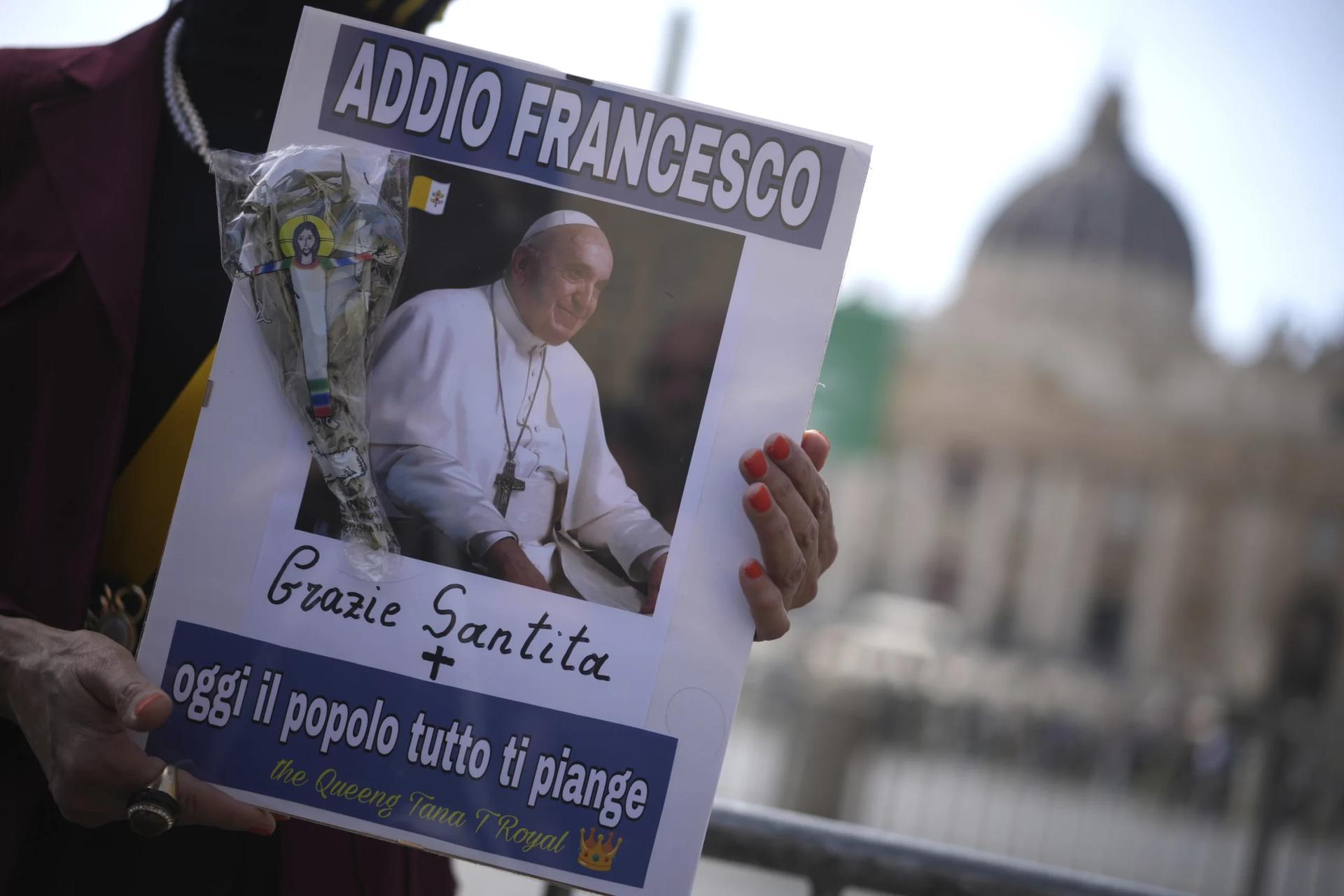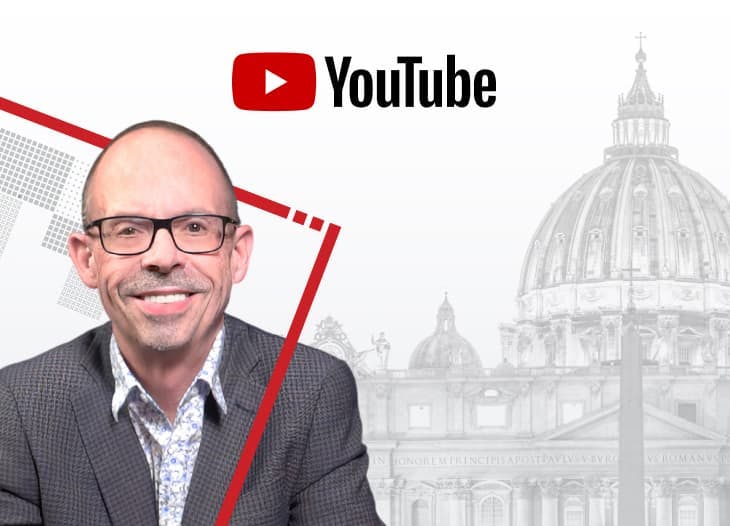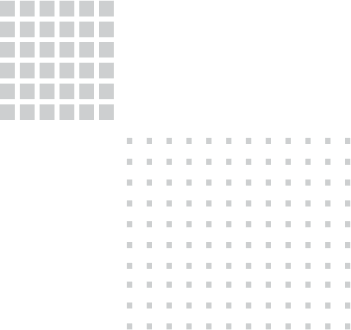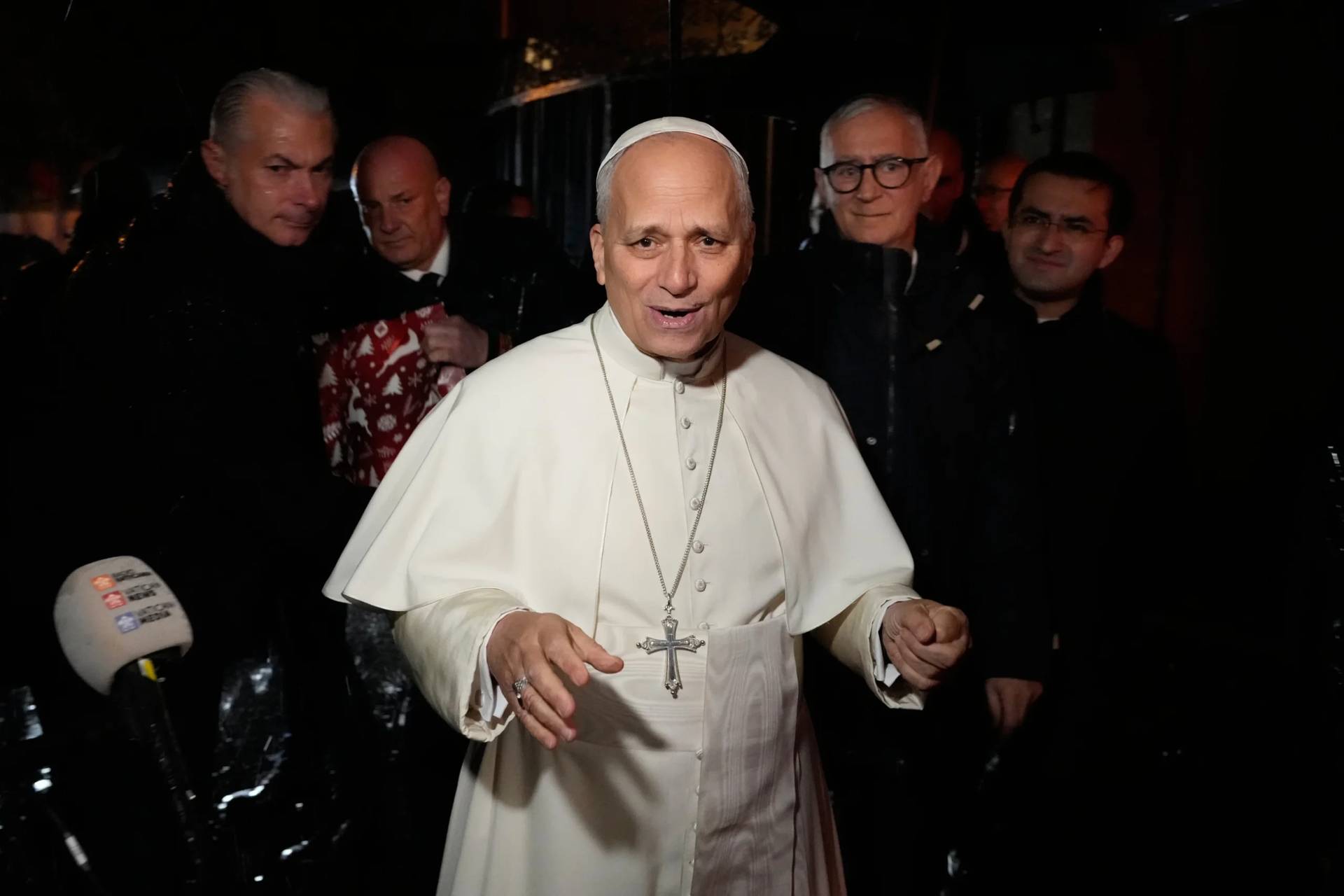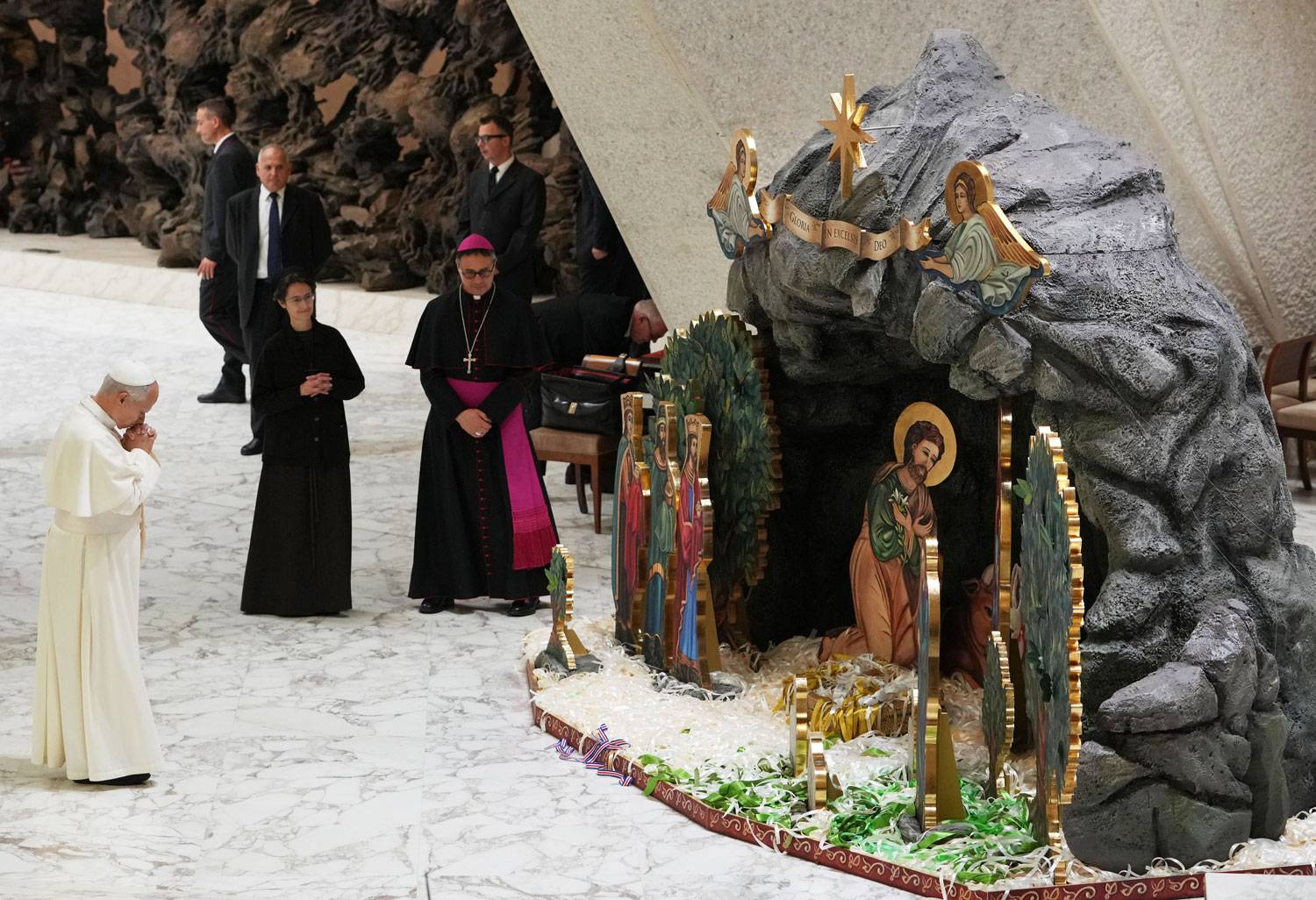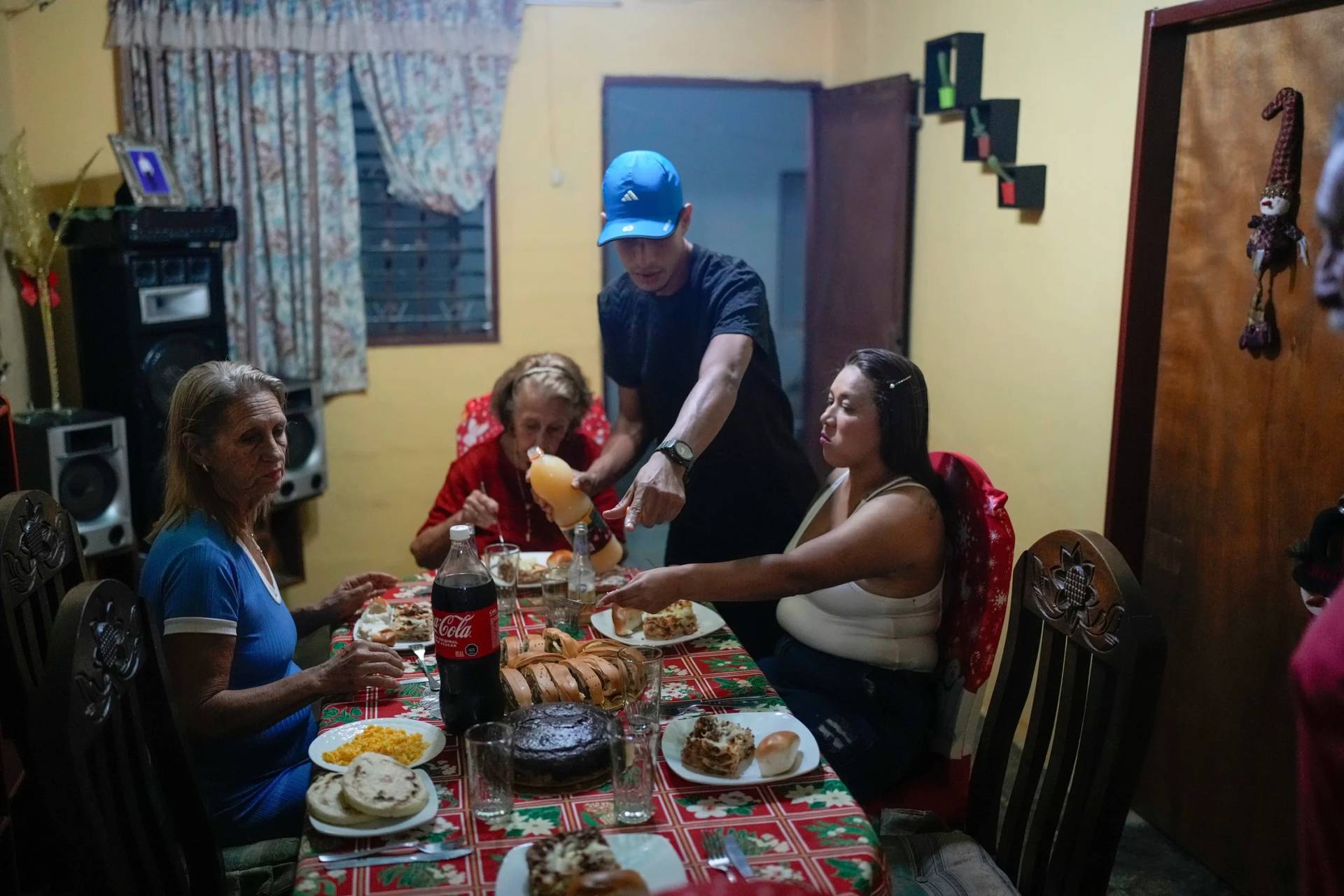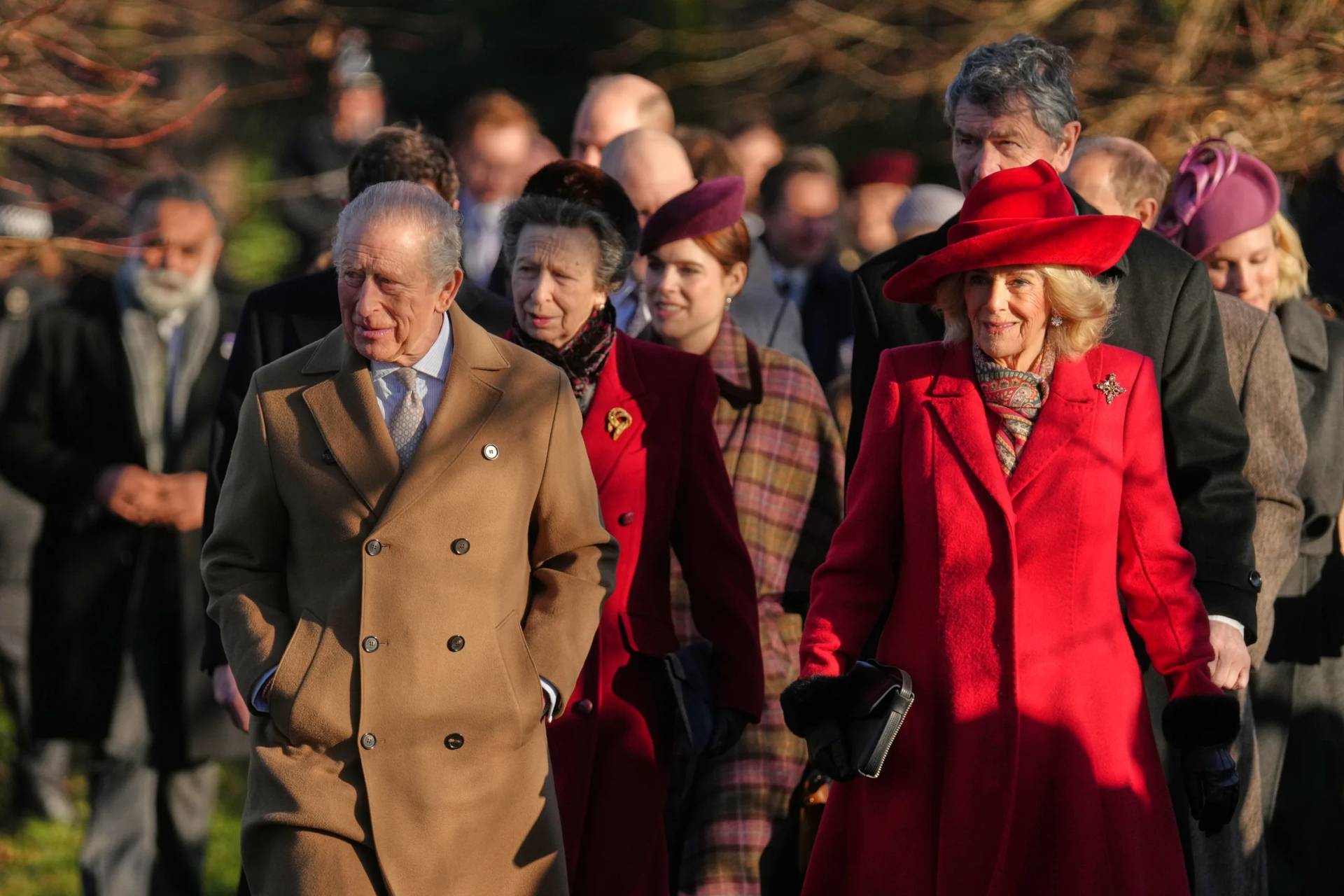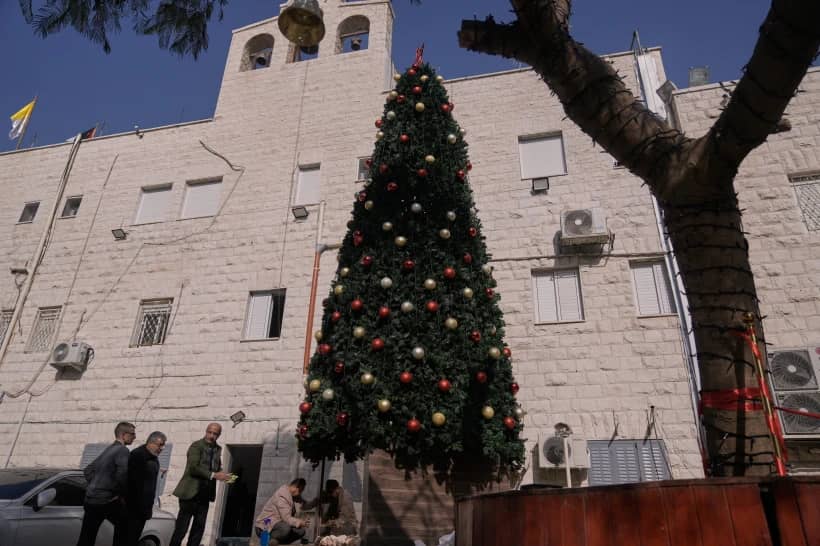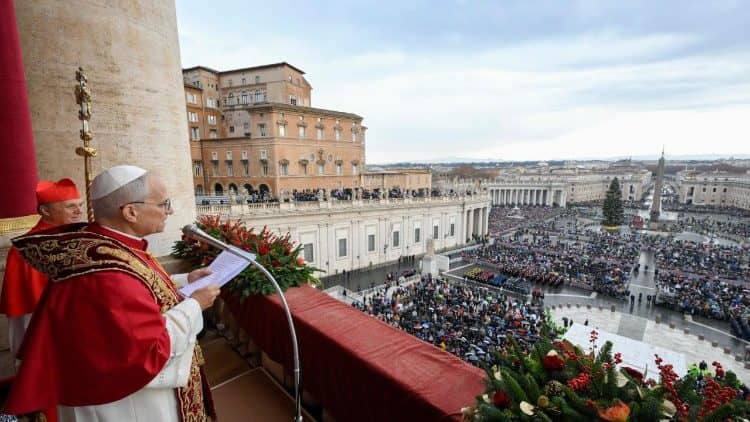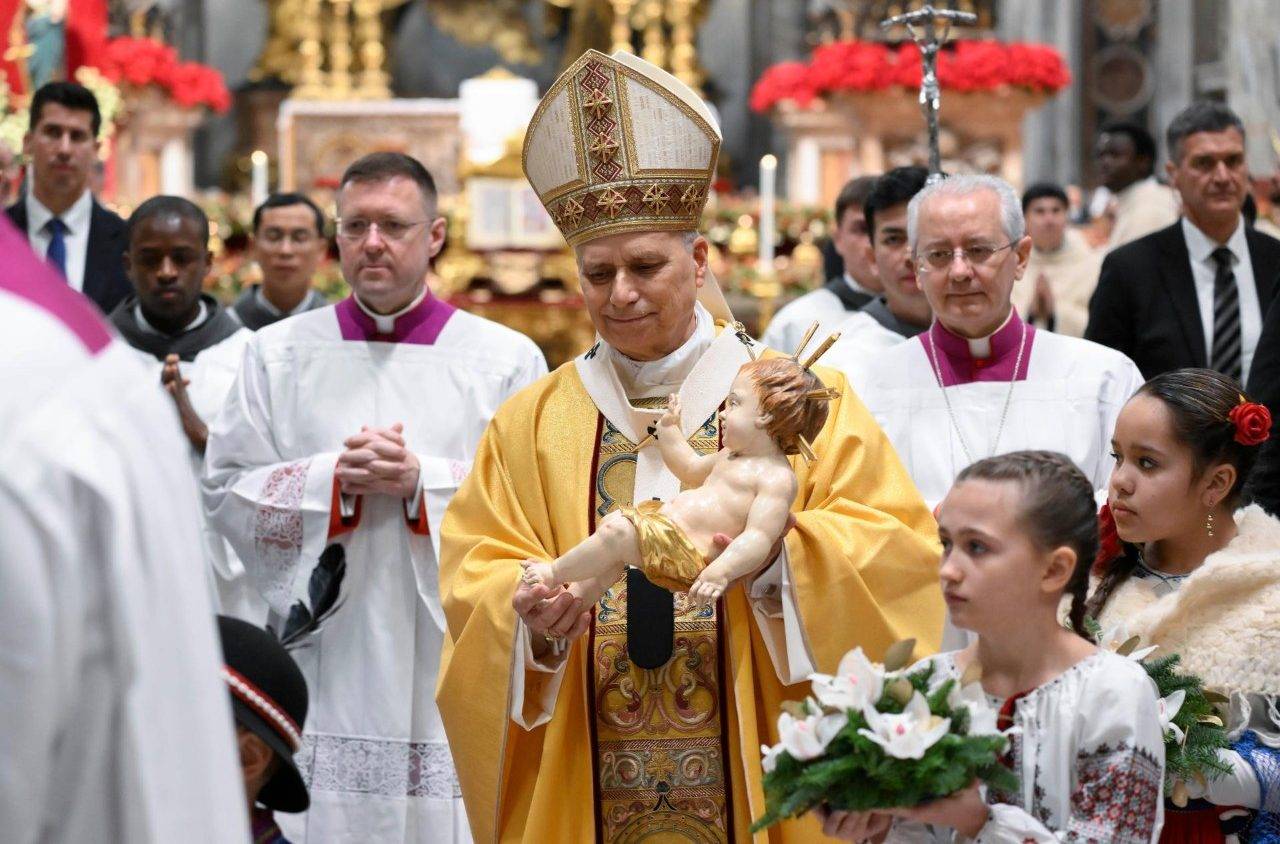NEW YORK – On July 8, 2013, Pope Francis traveled to the little-known Italian island of Lampedusa.
Upon arrival, Pope Francis threw a wreath into the sea to commemorate the tens-of-thousands – if not more – migrants and refugees who have died trying to make it across the Mediterranean. He then celebrated Mass on an altar made out of the remains of a boat used by migrants, condemning a “globalization of indifference” to the plight of those fleeing violence and poverty. He also spent time speaking, hugging, and praying with several migrants.
The trip only lasted half a day, but it was the first of Pope Francis’s papacy, and has been synonymous with it ever since, as he has prioritized advocating for compassion toward and the just treatment of migrants, who are often forced to move by circumstances out of their control.
“At that Mass [Pope Francis] explained that he chose to visit in order to pray and make a gesture of closeness, but also to re-awaken our conscience, and I love that phrase,” Bishop Edward Weisenburger of Tucson, Arizona, on the U.S.-Mexico border, told Crux. “He went so quickly to Lampedusa to prick our conscience, and he broke through, and what began there has continued all along.”
Indeed, Pope Francis’s prioritization of the plight of the migrant and refugee continued throughout his pontificate, both in words and in action. One set of words – perhaps the simplest, but also some of the most profound – came on the World Day of Migrants and Refugees on Aug. 15, 2017, when he reiterated the message of an address he gave to an international forum months prior, boiling down the necessary response to migrants and refugees to four simple words.
“Our shared response may be articulated by four verbs: to welcome, to protect, to promote, and to integrate,” Pope Francis said in the World Day of Migrants and Refugees message, which also offered a series of proposals for world leaders to consider.
That year, Pope Francis also established the Migrants and Refugees Section within the Roman Curia, which he personally led, to assist migrants and refugees around the world.
“How it was set up was very in the style of Pope Francis,” Dylan Corbett, who worked on the part of the section that focused on Central America, Mexico, the United States, and the Caribbean, told Crux.
“It was about walking with the local Church as the local Church walks with vulnerable people on the move, and in many ways, the work of the section, and that intuition that the role of the bishop of Rome is essentially to walk with the local Churches around the world – that pastoral style was very much incarnate in the work of the section,” he said. “What he was showing us was that the ministry of Peter is deeply connected with the concern for the poor.”
The section was eventually retired, and rolled into the broader work of the Vatican’s Dicastery for Promoting Integral Human Development. Corbett, who is the executive director of the El Paso-based HOPE Border Institute, a humanitarian organization that serves migrants, also continued his work with the dicastery, and said Pope Francis’s vision persisted.
“Walking with those on the margins, and in empowering work with local churches to do that work, that is the ethos of the work of the dicastery,” Corbett said. “It comes from [Pope Francis] himself and I think that’s a real contribution he’s brought to the ministry of the successor of Peter, but also to Christians throughout the world, that we need to be attentive to God who walks among us and the poor.”
The attention the Holy Father paid to the realities in the United States can’t be forgotten, either.
On Feb. 17, 2016, Pope Francis, on a trip to Mexico, celebrated Mass in Ciudad Juárez, across the border from El Paso, Texas. Hundreds of thousands of people attended the Mass – which included faithful on both sides of the border – where Pope Francis called for change.
“No more death! No more exploitation! There is still time to change. There is still a way out and a chance, time to implore the mercy of God,” he said in his homily.
Corbett helped organize the day. He said he vividly remembers the Holy Father going right up to the edge of the Rio Grande river, and pausing in silence to remember all of the migrants who came north and died crossing the river or the deserts.
“It was deeply moving, and the memory today is still deeply moving,” he said. “Knowing that there is someone who reminds us that it’s deeper than politics, that this is connected in a real way to the concern of God for the fate of the poor, that this is about responding to Christ, present in the migrant, and that provides a deep motivation that you can get through the difficulties and the trauma and the staleness of a broken politics, and divisiveness.
There’s also the unprecedented letter Pope Francis sent to the U.S. bishops on Feb. 11, 2025, in which he spoke about the “major crisis that is taking place … with the initiation of a program of mass deportations” by the Trump administration, while also commending the U.S. bishops for their efforts to work closely with migrants and refugees.
Bishop Mark Seitz of El Paso, who was once personally acknowledged by Pope Francis for his migration efforts, told Crux that the letter “means a great deal” and showed people that it isn’t just a few U.S. bishops presenting an isolated view or position on immigration, but that their advocacy “comes from the very heart of the Church.”
More broadly, he said Pope Francis’s attention to the issue of migration was profound.
“It’s far beyond anything I could have ever expected, but it’s certainly given me added strength, and I hope courage, to speak this message and to know that when I speak it it’s not my private opinion, but firmly rooted in the gospel and the teaching of the Church,” said Seitz, who is chairman of the United States Conference of Catholic Bishops Committee on Migration.
The aforementioned words and actions of Pope Francis were recognized worldwide. However, there are other smaller actions he took – personal thanks to people and organizations for their work, and responding to letters sent by youth and advocates, for example – that had a profound impact, locally, as well.
One such action occurred on Jan. 25, 2022, when he sent a response to teen volunteers of the Kino Border Initiative – an immigration ministry based along the U.S.-Mexico border in Arizona – who wrote him letters, commending their work with migrants and encouraging them to continue.
“I can quite literally say that the fact that he took that time and had that grace of a pastoral response to our young people here continues to be an inspiration to them a decade letter and really has been this cornerstone of feeling a closeness to Pope Francis and his global call,” Joanna Williams, the organization’s executive director, told Crux.
“For us at Kino, it isn’t just the realities that are reported on nationally or internationally or his public words, it’s also this true belief that we’re close to his heart and close to his mind, and I think that’s especially encouraging in difficult moments,” she said.
Pope Francis’s legacy is undoubtedly multifaceted, but in terms of consistency, there were few if any issues the Holy Father spoke on with more regularity than migration. It was something he understood in his younger years as the son of immigrants. It was something he was mindful of as a priest and as archbishop of Buenos Aires, and from there it was a focal point of his papacy.
“It’s true that it wasn’t the only reality, but it has been the consistent reality of his papacy in trying to bring us closer together as God has expressed his love for us and how we need to love one another, to recognize our humanity,” Archbishop Gustavo García-Siller told Crux.
While the plight of migrants remains, in some ways more than ever amid a myriad of crises – there are an estimated 281 million migrants around the world –, Seitz credits Pope Francis with bringing the Church’s teaching to the forefront of the conversation.
“A person would be mistaken if they thought the Church’s teaching on immigration began with Pope Francis,” Seitz said. “It certainly didn’t, and it goes way back. … However, Pope Francis has been the one to really bring home for us that the immigrants should be considered among what the group Mother Teresa would have called the ‘poorest of the poor.’”
Simply put, Corbett said immigration “has been a leitmotif” of Pope Francis’s entire papacy.
“Every day you’ve seen this concern,” Corbett said.
